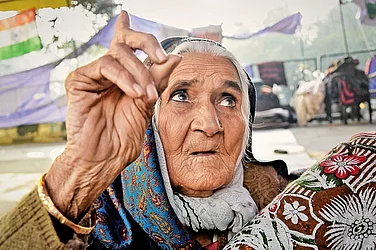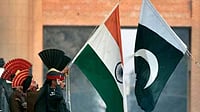
To be fair, the process started in the last decade and goes by the name of Allah Rakha Rahman. The first movie score by Rahman, Mani Ratnam's Roja, although dubbed, was to Hindi film music what Pulp Fiction was to Hollywood. Roja's score, especially Rukmini Rukmini..., broke several moulds, including the shackles of the mukhda-antara-mukhda-antara format. As Rahman truly comes into his own this decade, doing more Hindi movies than ever before, giving him company and competition are Shankar-Ehsaan-Loy, who, before Dil Chahta Hai and Kal Ho Na Ho, were considered too 'with-it' to attract the masses. "Rahman is largely responsible for the change. We don't follow any kind of rules. And it's becoming more and more acceptable," says Ehsaan Noorani.
Not too far behind are a reborn Anu Malik, Himesh Reshammiya, Aadesh Srivastava, Sandesh Shandilya, Ismail Durbar, Sandeep Chowta and Vishal-Shekhar. It's resulted in a bevy of new sounds, showing influences of Indian classical strains or pukki bandish (Saathiya, Tere Naam, Devdas), global beats (Kal Ho Na Ho, Main Hoon Na), folk songs (Chalte Chalte). And more is on the way. "I'm trying to get lounge music into movies in a very big way," says Reshammiya.
Prima facie, the new Hindi film music is working. Movie songs have become an integral part of the Indian diaspora's community life and have replaced Ravi Shankar, Zakir Hussain and L. Shankar as the face of Indian music abroad. Rahman's score for Bombay Dreams has earned the industry global acceptability, as has Malik's Chamma Chamma tune, used in Moulin Rouge. Researchers in Amsterdam and Auckland are choosing R.D. Burman and Hindi film orchestra as theses topics. Helen shimmies in a song from Gumnaam in the opening sequence of Hollywood's 2001 hit Ghost World. Even Bappida has won a copyright suit against artist Truth Hurts for the Kaliyon Ka Chaman sampler in his song Addictive.
The changes, in part, have been ordained by the demand from filmmakers, mostly a new crop looking for music that will blend with their movies as well as car stereos in South Delhi, South Bombay, and Southall" A whole audience, earlier cut off from Hindi film music, has been roped in by the new sounds," says Noorani
Thus, Mani Ratnam's pupil Shaad Ali will have none but Rahman to do Saathiya. Farhan Akhtar thought only the effervescence of Shankar-Ehsaan-Loy could complement his breezy style in Dil Chahta Hai and Lakshya. Jatin-Lalit gave Karan Johar a huge hit in Kuchh Kuchh Hota Hai. However, Johar didn't hesitate to curb J-L's scope in K3G by roping in Sandesh Shandilya and Aadesh Srivastava and then jettisoning the duo in favour of S-E-L for KHNH.
Restive filmmakers hiring multiple music directors is now the fashion. The Khan brothers—Salman and Sohail—started the trend with Pyar Kiya To Darna Kya, where Reshammiya sent feet tapping with Odh Li Chuneria and Tum Par Hum Hain Atke, and J-L did the other songs. Since then, multiple music directors have shared credit for Khoobsurat, Dillagi, K3G, Aankhen, Chalte Chalte and Khamoshi.
Boom added a whole new dimension by sourcing music from outside, Punjabi MC's Mundiya Tu Bach Ke Rahi and Groove Armada's I See You Baby. While no music could have suited Boom's bizarre narrative, it's becoming imperative for songs to complement the film's spirit because, rather than merely provide relief, they are back to being a part of the narrative. In the forthcoming Hum Tum, a large part of the characterisation is through songs. Raj Kumar Santoshi abridged Khakee's songs, which were there just for relief. In Prakash Jha's Gangaajal, the picturisation of its only song is more Rob Marshal (Chicago) than Indra Kumar. "It helps the album if the songs are woven into the narrative," says Reshammiya.
As issues regarding the Internet, mobile phones and FM radio as music mediums get resolved, this decade is poised to lay down the rules for the decades to follow. On the flip side, it may soon become difficult to tell one score from another. The synthesiser has become God, at the expense of individual instruments that impart greater character to tunes. The synthesiser, after all, is canned music. "Rhythm is overpowering everything else," says long-time film music presenter Amin Sayani.
Given the short shelf life of film music, the considerable bank of tunes that most music directors keep (Reshammiya's vault has 300) and most filmmakers' hurry to can the songs, lyrics are often the first casualty of the process.
For instance, a pattern—uncharitable elements call it a template—can be seen in the songs of even our foremost lyricist, Javed Akhtar. If a song starts Ek ladki ko dekha to aisa laga, the following lines describe ...kaisa laga; if it is Chanda se poochhenge hum saare sawal nirale, you immediately get a laundry list of questions. Even Gulzar's lyrics are often prosaic and may need a fair bit of explaining; look no further than Gila gila pani (wet wet water!). No wonder then that some of the truly talented, like Nida Fazli, prefer to concentrate on non-film work. After all, it's a world where Nikamma kiya is dil ne lays claims to being an adaptation of Ghalib's Ishq ne ghalib....






















